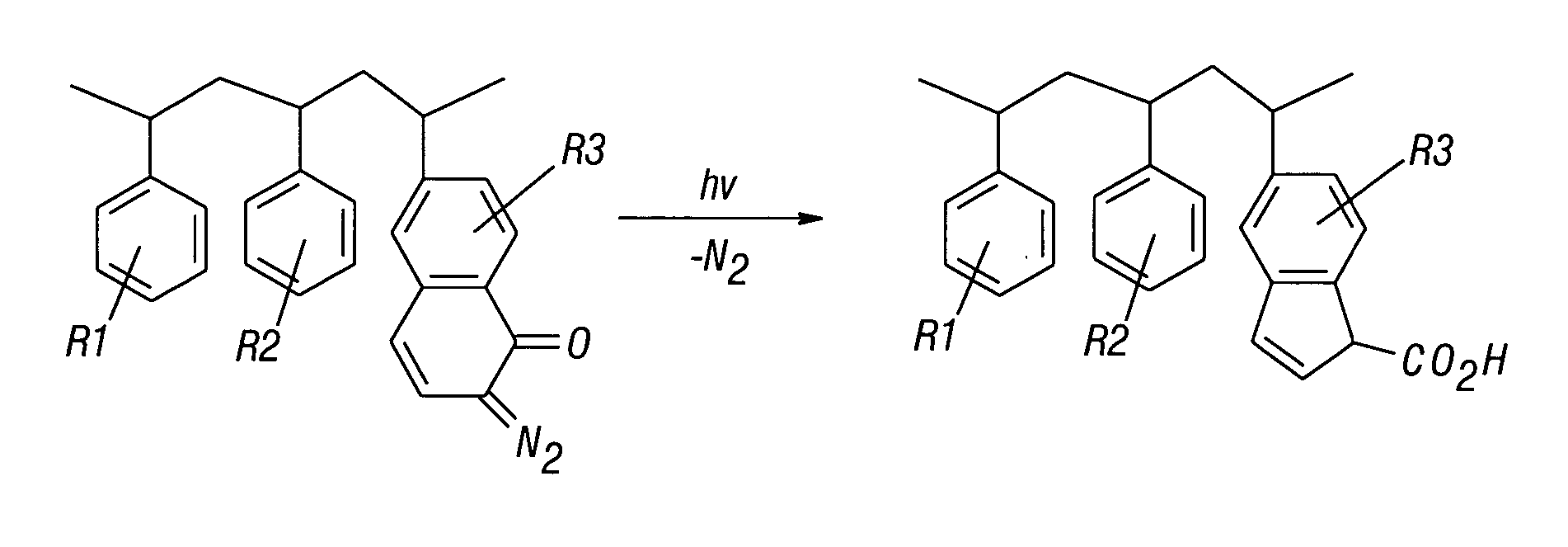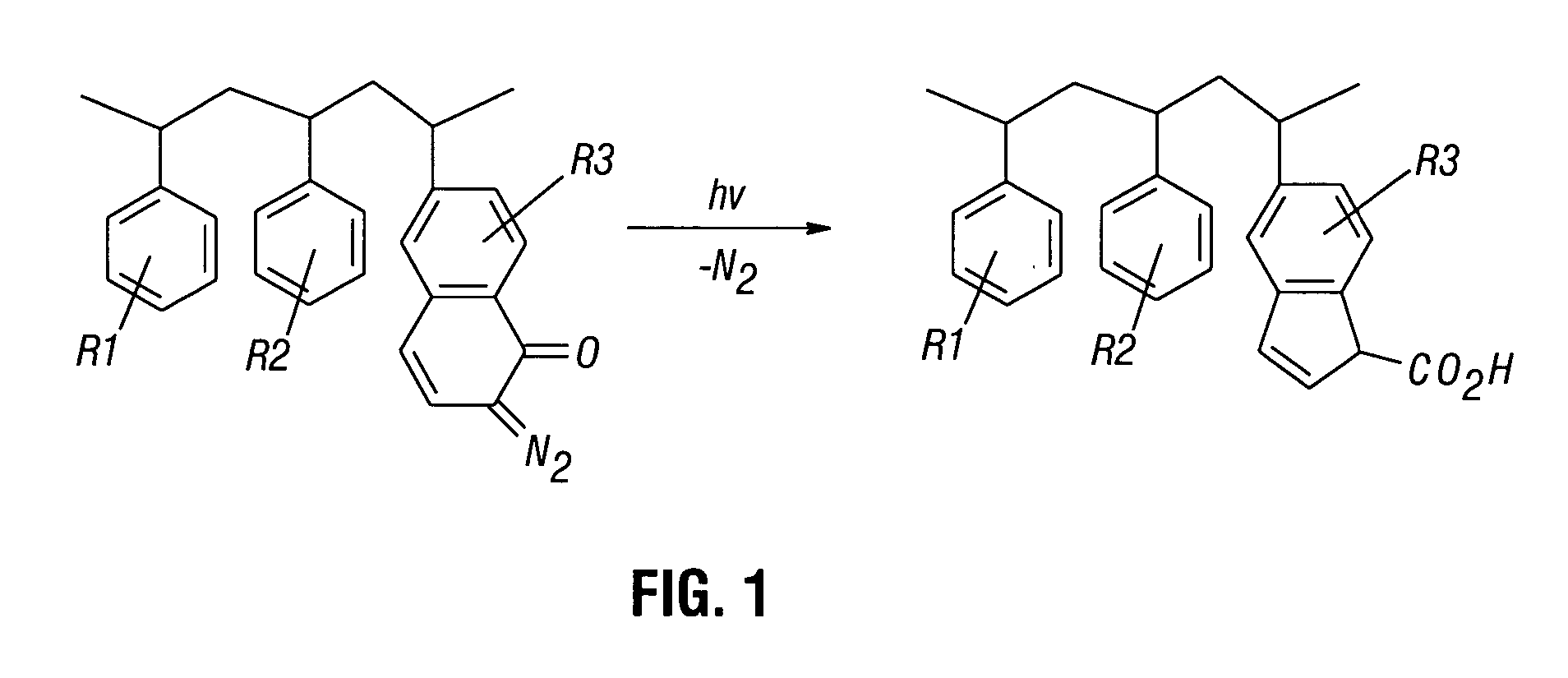One component EUV photoresist
a photoresist and one-component technology, applied in the direction of photosensitive materials, auxiliaries/base layers of photosensitive materials, instruments, etc., can solve the problems of photoacid generators that will outgas under extreme ultraviolet, degradation of lenses used in extreme ultraviolet optics, and portion of photoacid generators of this type will outgas
- Summary
- Abstract
- Description
- Claims
- Application Information
AI Technical Summary
Benefits of technology
Problems solved by technology
Method used
Image
Examples
Embodiment Construction
[0011]In one embodiment, by introducing photoactive compounds into the polymer backbone of the photoresist, outgassing of photo-reactive materials may be reduced. Photoactive compounds, such as diazonaphthoquinone (DNQ), may be incorporated on a polymer backbone via a conventional polymerization reaction, using initiators (such as AIBN, and phenyl peroxide, etc.). The photoactive compounds reduce the amount of outgassing of reactive materials. Since the diffusion of the photoacid generator is believed to be a primary source of line width roughness of chemically amplified photoresists, use of photoactive compounds on the polymer backbone may reduce line width roughness because large molecules will not diffuse over any significant distance.
[0012]As the photoactive compounds may be incorporated into the polymer backbone, a resist with high sensitivity and high contrast may be provided. Moreover, the breakdown of the photochemistry does not generate hydrocarbons (such as isobutene) as d...
PUM
| Property | Measurement | Unit |
|---|---|---|
| area | aaaaa | aaaaa |
| solubility | aaaaa | aaaaa |
| wavelengths | aaaaa | aaaaa |
Abstract
Description
Claims
Application Information
 Login to View More
Login to View More - R&D
- Intellectual Property
- Life Sciences
- Materials
- Tech Scout
- Unparalleled Data Quality
- Higher Quality Content
- 60% Fewer Hallucinations
Browse by: Latest US Patents, China's latest patents, Technical Efficacy Thesaurus, Application Domain, Technology Topic, Popular Technical Reports.
© 2025 PatSnap. All rights reserved.Legal|Privacy policy|Modern Slavery Act Transparency Statement|Sitemap|About US| Contact US: help@patsnap.com


